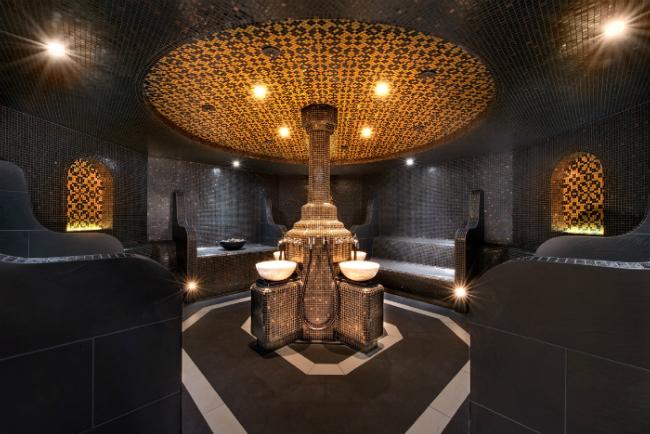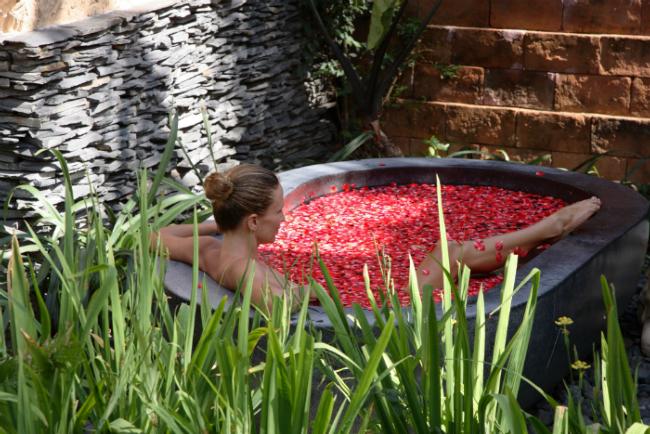The art of yielding
Published
05th Apr 2013
With revenue higher on the spa agenda than ever before, we find out why you should implement yield management strategies and how to go about it
WORDS NORA ELIAS
It’s something we’re accustomed to from airlines and hotels, that prices vary depending on availability and demand, fluctuating not only from season to season but from day to day and at times even from hour to hour. However, while an established and accepted practice when booking flights or hotel rooms, dynamic pricing as a yield management mechanism is less commonplace in the spa industry. While there is no lack of awareness of the principle, the majority of spas have not only been cautious about putting fl exible pricing structures into practice, but about implementing yield management techniques at large.
Late adopters
“Yield management has been at the forefront of the spa business for years but a large number of spas across the globe are still hesitant to truly [embrace] a coherent dynamic pricing policy,” says Sonal Uberoi, founder and chief executive of Spanish spa consultancy Spa Balance, which among other services, offers guidance on revenue management.
There are a number of possible explanations for this reluctance, one being the recurring spa industry stumbling block of a lack of business skills among the industry’s management level. Jeff Butterworth, chief spaand wellness officer at Lux Resorts, says that in his experience, the problem is: “The level of training and understanding of business principles among spa managers. Most spa managers are very operationally focused and tend not to fully understand the art of business maximisation.”
Trent Munday, regional vice president of Mandara Spa, a subsidiary of Steiner Leisure, suggests that it’s not merely a case of the spa market not fully comprehending the minutiae of yield management however, but also of working with a different set of circumstances.
“If you’re travelling somewhere, you need a flight and you need a place to stay. You don’t need a spa treatment,” he says. Commenting further on the differences between spas and airlines, Munday adds that: “If you have something that’s in demand, your customers will accept all sorts of things, including paying more at peak times.”

The fear factor
Another key reason many spas have pulled back from introducing competitive pricing is a fear of driving customers away. The concern is that paying more for peak time treatments and services, as is routinely the case with flights and hotel rooms, would not be acceptable to the spa clientele. This is not something with which everyone agrees however. “Consumers are now used to revenue management in all businesses and they understand the model,” Butterworth says, adding that, in fact, “consumers are actually looking for these types of offers now.”
Reinforcing this, Uberoi comments that spas can re-educate clients to become accustomed to variable pricing, just as hotels and airlines have done. “Today’s consumer is price savvy and familiar with the yield management system used in the airline and hotel industries and they plan accordingly.
Why would it be odd for them to do the same with spa treatments?” she says. Like any other market, the spa market is a segmented one and while not everyone is willing or able to pay more for the convenience of having what they want,when they want it, there will always be a percentage that is. “You will still get guests who are happy to pay for the luxury of a service, when they want it, which is usually at peak times,” says Butterworth.
There is therefore nothing preventing spas from catering for these different customer segments simultaneously. “Price sensitive customers who are willing to buy treatments at off-peak times can do so at a lower price, while price insensitive customers, who want to have a treatment at a peak time, can do that,” Uberoi says. She also emphasises that dynamic price structuring does not necessarily mean charging more at busy times. “The full treatment price can be offered during peak hours and a reduced price can be offered at other times,” she explains.

Yield options
Flexible pricing is often pitted against-value add as a yield management tool for the spa industry, with many preferring the latter. Lee David Stephens, general manager of Bangkok headquartered Mspa nternational, which develops, owns and manages spas and whose brands include Anantara and Mandara Spa, says that: “I don’t think clients should have to pay more for a treatment at 5pm than they would for the same treatment at 10am, just because 5pm is a popular time.” He adds that: “I would rather give value-add, extending your Thai massage from 60 minutes to 90 minutes, for the same price, if you come in at 10am, as opposed to 5pm.”
While Stephens believes that price variations within as narrow a window as different times of the day would not sit well with clients, he feels that adjusting your price depending on whether or not it’s a busy time of the week, month or year – just as airlines and hotels do – is another matter. “Varying your price between weekdays and weekends, or based on seasonality, is something I agree with and something I think clients can understand.”
As Uberoi points out, yield management is in a nutshell “the practice of allocating the right space to the right customer at the right time, in order to maximise revenue.” Value-add, in the form of extended treatments or product giveaways, can certainly be used to achieve this, as can tiered pricing structures based on whether it’s a peak or an off-peak time slot. Ensuring that treatments are booked at the most financially advantageous time for the spa is another way to efficiently drive revenue.
Effectively a case of assessing which treatments are most profitable based on the cost of the equipment used, how long the treatment room will be required for and how much of the therapists’ time they take up, Stephens recommends spas to “keep longer packages to off-peak times and prioritise shorter treatments with a quicker turnaround during peak hours. That way you will see more clients and yield more business.”
Being aware of and making full use of your therapists’ skills and areas of expertise is another revenue management instrument at spas disposal. “Specialise your therapists,” Stephens says. “If you know that a therapist is particularly good at a certain treatment and you have enough work to keep that one therapist busy with that treatment, then allow them to concentrate on it,” he says. “By doing that you are in effect yielding your business, because you know that this therapist will give you the best return on that appointment.”

To discount or not to discount?
The question of discounting is currently one of the most hotly debated topics in the spa industry, a discussion intensified by a challenging economic climate that has made this option increasingly appealing to many spas. Often charged with failing to create a loyal, long-term, customer base, the possible application of discounts as part of a yield management strategy is also something on which the industry is in disagreement.
“I don’t believe in discounting at all. A price is a price,” says Ingo Schweder, founder and chief executive of Thailand-based management company Goco Hospitality, whose clients include the Mövenpick and MGM Grand hotel groups, Clardige’s hotel in London and the awardwinning Sha Wellness Clinic in Spain.
“The only discounting we ever do is based on volume. In other words, if you buy a 10-treatment package you, for example, get the 11th treatment for free. Or we might give you a price reduction on that volume.” Similarly not a proponent of discounting, Munday say that the economic crisis should not be used as a blanket justification for the introduction of discounts. “In tough times, customers of course don’t have as much money to spend, but that doesn’t mean that they won’t spend,” he says. “What it does mean is that they pay more attention to getting value for money but if we’re offering something of real value to them, we shouldn’t have to discount.”
Munday advises spas to focus on creating a quality offering and on providing value-add. “Don’t offer customers 20% less on the price, give them 20% more on the treatment instead,” he says. Stephens is of the view that over discounting “cheapens your offering” but that there can be a place for limited period discounts, while Butterworth, quite contrary, considers discounts integral to yield management. “Discounting is critical, without it, you don’t have revenue management,” he says.
It is, however, vital to get the discounts that you offer right, if they are to be successful. “The key is to set a pricing policy that is not too low and that still brings in revenue and to try and keep the average guest spend high by offering value additions,” Butterworth concludes.

Forward planning
Price adjustments are, however, not the only way to yield. One area of revenue management that is, Butterworth says, often overlooked in the spa industry, is forecasting. “At Lux, our main focus is on forecasting, which is often not discussed as an element of spa revenue management. We have an elaborate system in which we forecast demand on a weekly, monthly and quarterly basis. This allows us to schedule [staff appropriately] and have optimal manning when we need it.” Schweder agrees that: “Forecasting to correctly manage your rotas; making sure you have the right staff available at the right time, is an important part of yielding your business.”
While there are diverging opinions on the best way to yield, experts are in agreement that understanding your customer base is essential to the ability to do it well. “It’s about knowing your customer, knowing where the demand is and maximising that demand,” Schweder says. One tool that can help spas analyse and understand their customer base is the software now on the market. Canadian software provider Resort Suite is among those who have led the way, with companies such as Spa Soft and Spa Booker, the latter both used by Goco, also prominent providers of revenue analytics software.
“Software has been the leader in allowing spa management to develop,” Butterworth says. “Being able to analyse spa statistics allows managers to set a revenue management policy.” Exactly what that policy should look like is, however, up to the individual spa and reliant not only on management’s views on the best way forward, but on factors such as size, clientele, location and spa type.

